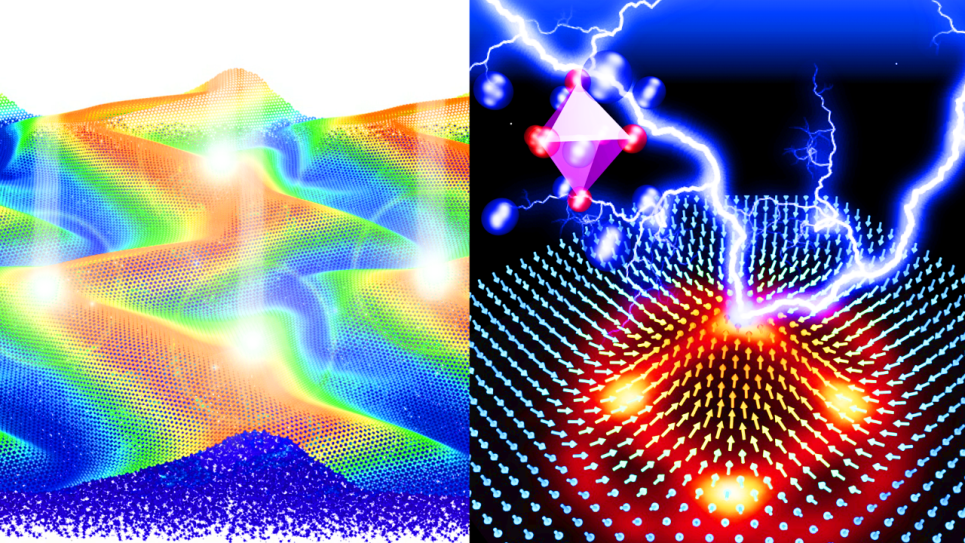
Diffusion Monte Carlo spin density difference between bulks of potassium-doped nickel oxide and pure nickel oxide, showing the effects of substituting a potassium atom (center atom) for a nickel atom on the spin density of the bulk.
Image credit: Anouar Benali, Olle Heinonen, Joseph A. Insley, and Hyeondeok Shin, Argonne National Laboratory
